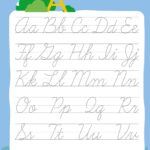In a rapidly evolving world, the prevalence of autism has surged, impacting approximately 1.5 million people in the United States. This substantial rise, from only 1 in 10,000 cases in the 1970s, underscores the urgent need for innovative approaches to support and educate autistic individuals. As the educational landscape grapples with this challenge, a revolutionary teaching method is gaining prominence, offering new hope to parents and educators seeking effective ways to nurture the reading skills of autistic children.
The Soaring Need for Specialized Education
Autism, a neurodevelopmental disorder characterized by challenges in social interaction, communication, and repetitive behaviors, demands a nuanced and specialized approach to education. With the growing awareness of autism spectrum disorder (ASD), the demand for educational tools and methodologies tailored to the unique needs of autistic learners has become more pressing than ever.
The Emergence of the Readent Learning System
Amid this backdrop, SFK Media Specially For Kids Corp has introduced the Readent learning system, a groundbreaking initiative designed to cater specifically to the needs of autistic children. Recognizing the challenges posed by traditional teaching methods, the Readent system leverages innovative techniques to create a learning environment that resonates with the visual thinking strengths often associated with autism.
Understanding Autism through the Lens of Dr. Temple Grandin
Dr. Temple Grandin, an associate professor at Colorado State University and a leading authority on autism, has played a pivotal role in shaping our understanding of autism and its educational implications. As an individual with autism herself, Dr. Grandin emphasizes the significance of visual thinking in the learning process. “I think in pictures. I do not think in language. All my thoughts are like videotapes running in my imagination,” she explains.
The Visual Advantage: Reading Movies
At the core of the Readent learning system are “Reading Movies,” a revolutionary concept that transforms classic children’s stories into interactive film adaptations presented in DVD format. This approach acknowledges and capitalizes on the visual thinking strengths prevalent in many autistic individuals. As actors bring narratives to life, the words seamlessly appear on the screen, providing a dual stimulus of visual and written information crucial for language development.
A Holistic Approach to Autism Education
Len Anthony Smith, CEO of SFK Media, underscores the Readent system’s commitment to incorporating modern research in teaching reading to autistic children. The program’s interactive wordplay dictionary, comprehension quizzes, and engaging games align with the latest insights from cognitive science, creating a holistic and effective approach to autism education.
Teaching Tips from Dr. Temple Grandin
In addition to endorsing the Readent system, Dr. Grandin offers practical insights for parents and educators engaged in teaching autistic children:
1. Simplify Instructions for Enhanced Understanding
Autistic individuals may struggle with lengthy verbal instructions due to challenges in remembering sequences. Dr. Grandin recommends opting for written instructions on paper, providing a tangible reference for the learner.
2. Visual Number Concepts for Concrete Learning
To teach numbers effectively, Dr. Grandin suggests employing concrete visual methods, such as colored blocks or wooden “fruit” cut into fractions. These hands-on approaches cater to the visual thinking preferences of autistic learners.
3. Technology as a Facilitator
Recognizing the motor control challenges faced by many autistic children, Dr. Grandin encourages the use of technology. Allowing children to type on a computer can alleviate frustration associated with handwriting difficulties.
4. Optimizing Computer Use for Enhanced Learning
To optimize computer-based learning, Dr. Grandin recommends placing the keyboard close to the screen. This arrangement ensures seamless interaction for children who may face challenges in remembering information displayed on the screen.
5. Flashcards for Association and Comprehension
For non-verbal children, Dr. Grandin suggests using flashcards to associate words with pictures. Real objects and photographs offer a tangible connection, surpassing the limitations of line drawings.
Conclusion
In a landscape where autism presents unique challenges, the Readent learning system emerges as a beacon of hope for parents, educators, and, most importantly, autistic children. By embracing the strengths of visual thinking and incorporating interactive elements, this revolutionary approach is poised to make significant strides in the realm of autism education.
In conclusion, the path forward involves a collective commitment to understanding and addressing the diverse needs of autistic individuals. The Readent learning system stands as a testament to the power of innovation and inclusivity, offering a transformative educational experience that has the potential to redefine how we approach autism education.
Read also : Positive Parenting Techniques 101: A Comprehensive Guide to Transform Your Effective Parenting Journey





